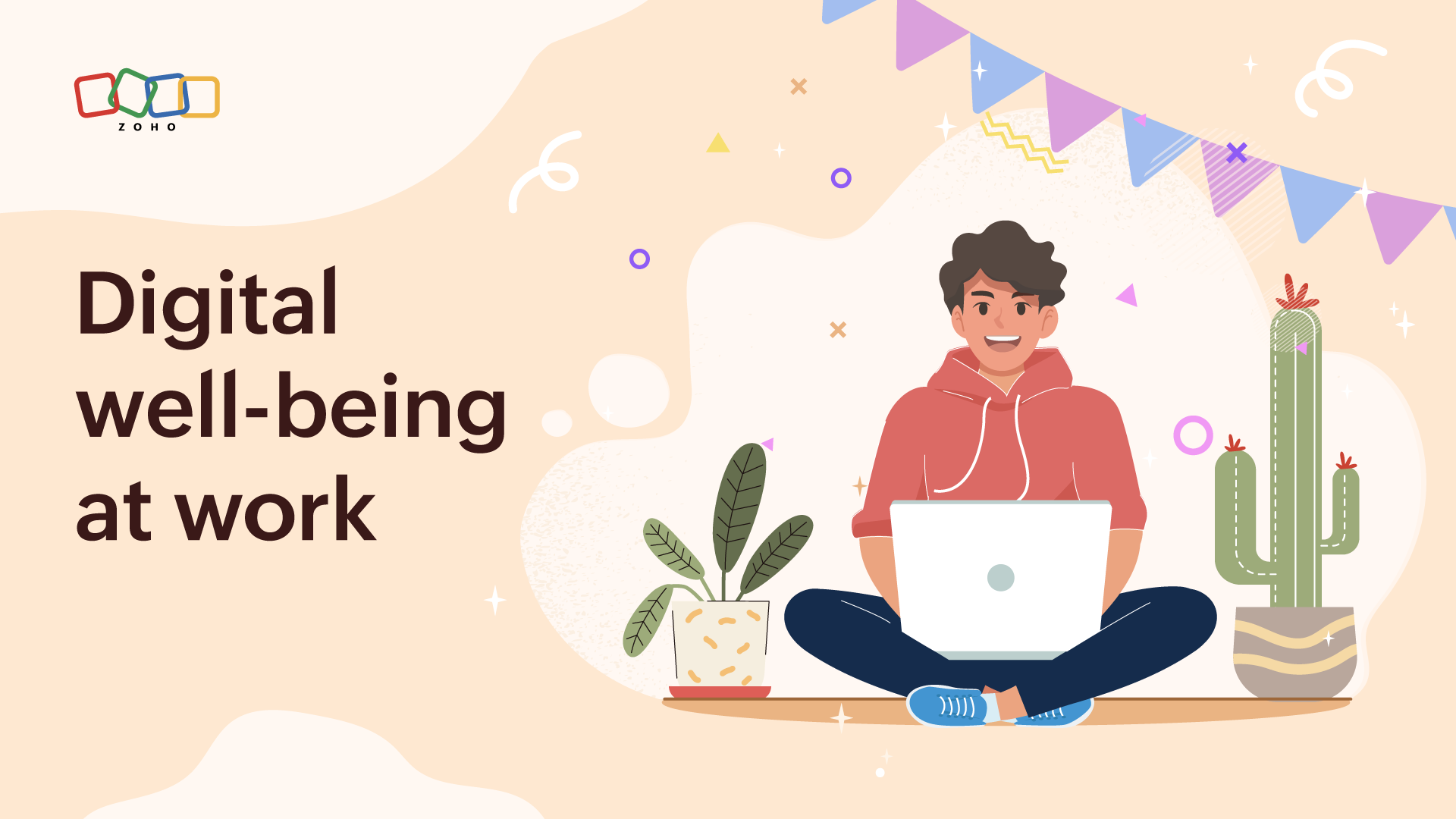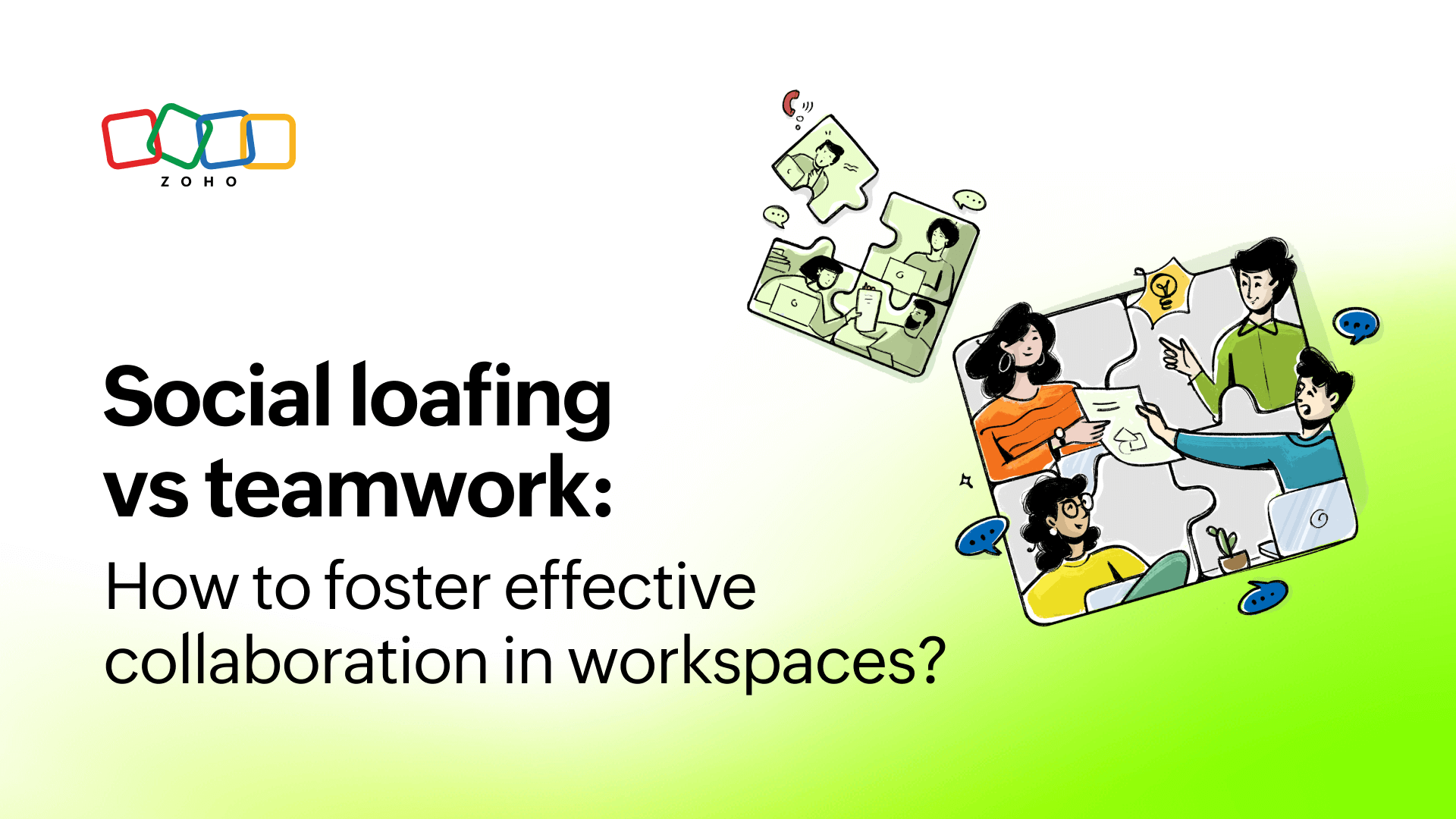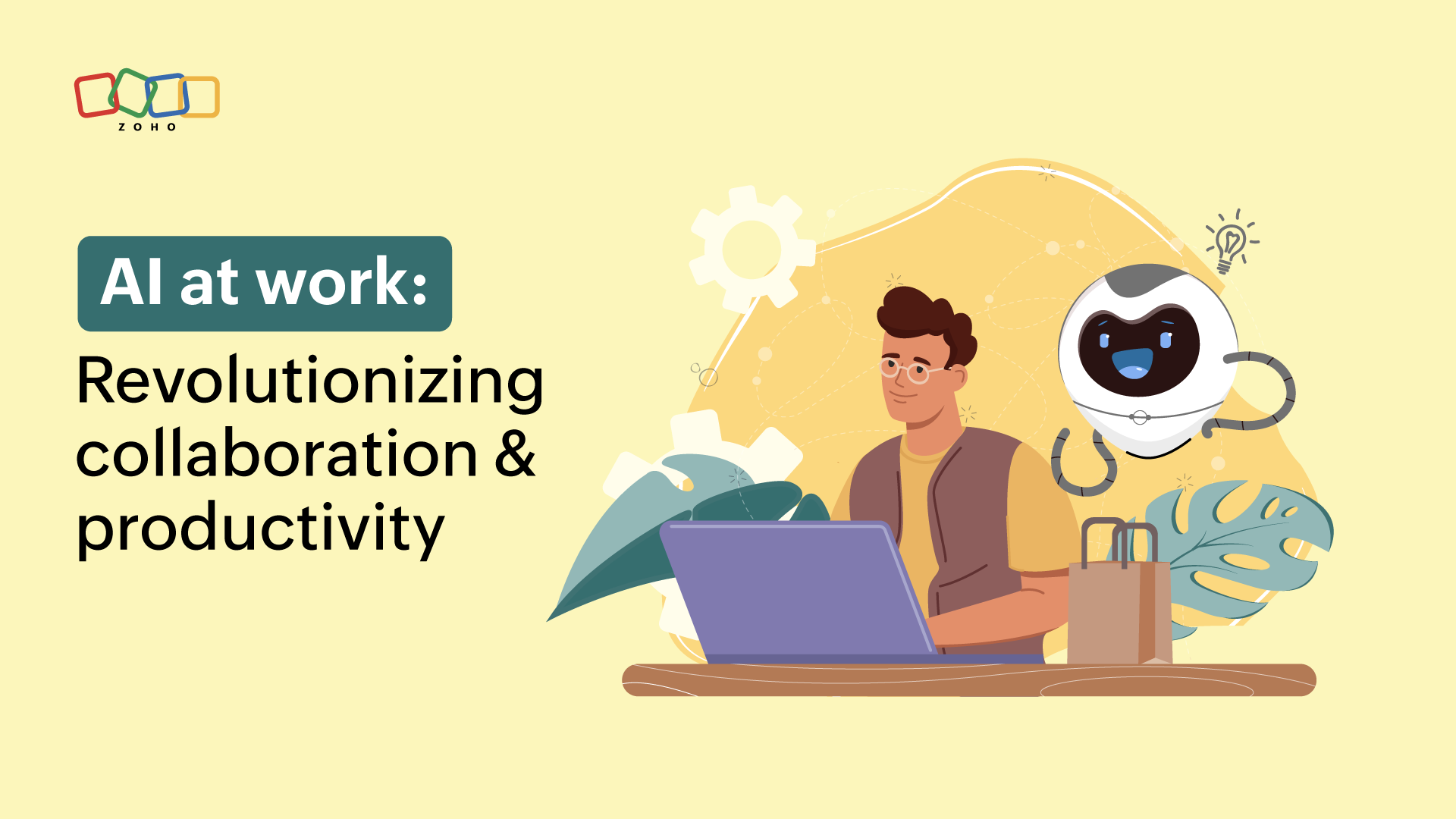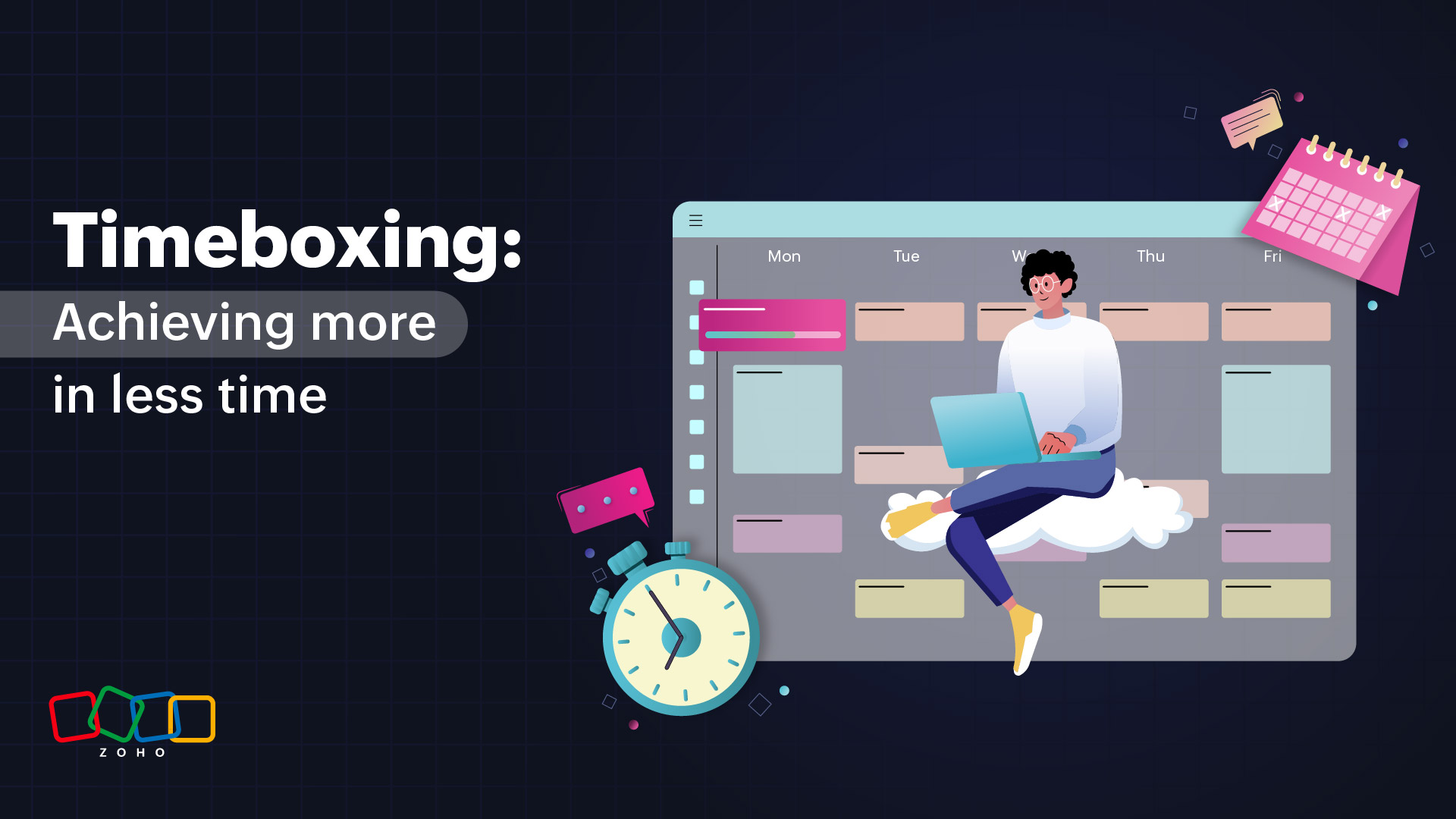- HOME
- All Topics
- Productivity in the workplace
- Digital well-being at work: Striking the perfect balance
Digital well-being at work: Striking the perfect balance
- Published : October 18, 2024
- Last Updated : October 18, 2024
- 168 Views
- 8 Min Read
The line between our professional and digital lives has blurred to the point of non-existence. Screens dominate the workspace, tools once meant to increase efficiency now create endless loops of distraction, and the concept of “unplugging” feels distant.
Digital well-being, while rarely discussed, is critical to maintaining productivity and mental clarity in environments driven by constant connectivity.
It’s not just about managing workloads—it’s about surviving the digital onslaught that defines modern work. Let’s take a look at what this concept really means and how to achieve it.

The impact of digital overload on employee productivity
The modern workspace has evolved into a digital battleground, where constant connectivity and notifications drive a perpetual state of distraction. Emails, project management apps, instant messages, and social media notifications fragment attention throughout the day. What once promised efficiency has mutated into an endless loop of task-switching that stifles meaningful progress.
Research highlights the stark consequences of this digital overload: Employees spend almost 50% of their time on shallow tasks—responding to emails, switching between platforms, or managing notifications. With each interruption, focus takes a hit, and it can take up to 30 minutes to return to a task after being distracted. This not only delays the completion of tasks but also diminishes the quality of work, creating a vicious cycle where employees feel they’re always catching up.
The brain, contrary to popular belief, isn’t wired for multitasking. When employees jump from one task to another—writing reports, responding to messages, or attending virtual meetings—the cognitive load skyrockets, leading to mental fatigue and reduced creativity. The deeper the dive into fragmented work, the harder it becomes to engage in high-level, strategic thinking.
Over time, digital overload doesn’t just hinder productivity—it contributes to burnout. Teams face reduced morale as employees struggle to meet expectations, feeling less accomplished and more drained by the end of each workday.
The toll extends beyond the workplace, with individuals increasingly unable to disconnect from work-related stress even outside business hours. So, what’s the solution? Well, the best place to start is by delineating the border between work and personal life.
How important is work-life balance to digital well-being?
To combat mass digital burnout, we desperately need a reevaluation of the digital tools we use, how we manage them, and how to foster a healthier relationship with technology. This involves asking ourselves:
Do we really need so many apps? Most of the time, having multiple different platforms can make things difficult, despite streamlining being the goal.
Can we establish boundaries? This requires both software to accommodate muting options and employers to understand the sanctity of their team members’ personal lives.
Does it get worse? With the increased dependence on digital tools, digital well-being is only possible if we stem burnout as fast as possible. Otherwise, it can easily spiral out of control.
The rise of remote and hybrid work has distorted the boundaries between professional and personal life. For many, work-life balance has been replaced by work-life integration, where the two coexist but often collide in ways that are neither healthy nor sustainable. Without the clear separation provided by a physical workspace, the pressure to be always online and available erodes personal time and leads to digital burnout.
Managing this balance requires more than just time management—it involves setting strict digital boundaries.
Calendars now serve as both a shield and a trap, a tool for scheduling focused time but also a space where meetings are crammed in without a second thought. The ability to "turn off" after hours is further complicated by constant notifications and the expectation of instant responses, regardless of the hour.
Reducing digital fatigue through mindful technology use
Digital fatigue is a silent productivity killer. Constant exposure to screens, information overload, and the pressure to stay connected are taxing on both the mind and body.
Unlike traditional fatigue, which stems from physical exertion, digital fatigue arises from mental strain, with symptoms like headaches, blurred vision, difficulty concentrating, and a creeping sense of burnout.
One of the primary drivers of digital fatigue is the tendency to remain plugged in—endlessly toggling between apps, messages, and tasks without giving the brain enough time to rest. This behavior not only wears down attention but diminishes the ability to think creatively or solve complex problems. The endless barrage of digital stimuli leaves employees feeling drained and disconnected.
Addressing this requires a more intentional approach to technology. Mindful technology use revolves around reclaiming control over digital tools instead of letting them dictate the pace of the day. This starts with the small changes that build momentum: limiting screen time through the Pomodoro technique, scheduling screen-free breaks, and blocking out time for deep work without distractions.
Another key element is setting up an ergonomic digital environment. This involves adjusting screen brightness, using blue-light filters, and ensuring proper posture to reduce physical strain. Cutting down on unnecessary notifications, unsubscribing from irrelevant email lists, and using tools that filter out digital noise can help employees focus on what truly matters.
Creating a culture of digital well-being in the workplace
These challenges are getting progressively more daunting, but, thankfully, solutions are plentiful. Ultimately, establishing digital well-being hinges on three main pillars.
Leadership’s role in digital well-being
The foundation of digital well-being in any organization starts with leadership. Leaders set the tone for how technology is used and how employees interact with it.
When leaders model healthy digital habits—such as unplugging after hours, taking breaks, and encouraging focus—they create a culture where digital well-being becomes a priority. It's not enough to talk about balance; leadership needs to actively show that it values a healthy digital environment.
Implementing company-wide practices
Establishing company-wide practices is essential for fostering digital well-being. This might include setting limits on after-hours communication, encouraging “email-free” days, or implementing policies that protect employees' time and mental space.
Introducing scheduled “focus hours,” where employees can work uninterrupted, is another powerful method to combat the constant pull of notifications and meetings. These policies help signal that the company values employee mental health as much as output.
Encouraging healthy tech use among teams
The digital habits of individual teams can also play a significant role in overall well-being. By promoting the use of communication channels wisely—such as reducing unnecessary instant messages or emails—teams can optimize their workflows without overwhelming each other.
Encouraging asynchronous communication for non-urgent matters also helps reduce pressure, allowing employees to engage on their own terms. Additionally, fostering offline moments—whether in meetings or team collaborations—can provide a much-needed respite from constant screen exposure.
Supporting mental health initiatives
Digital well-being is closely linked to overall mental health. Companies that offer mental health resources, such as counseling services, workshops on mindfulness, or even app-based well-being programs, demonstrate their commitment to creating a healthier digital work culture. Providing mental health days or flexible work hours can further alleviate the stress caused by digital overload.
Tools and resources for managing digital well-being
While we've talked about how an over-reliance on tech can hinder digital well-being, the truth is that it would simply be unwise and counterproductive to disregard the benefits involved. The most important of these benefits are the time-savers for both team members and companies as a whole, as well as those that can improve collective well-being.
Digital well-being apps
There’s no shortage of apps designed to help individuals manage their digital habits. Tools like Freedom and Forest allow users to monitor and limit the time they spend on distracting websites or apps.
These apps give users the ability to regain control over their digital environments, helping them focus more effectively and avoid burnout. For teams, using such tools can be a way to collectively reduce digital overload while still staying productive.
Zoho Workplace's well-being features
Zoho Workplace has several built-in features that promote digital well-being. Its task management systems allow employees to organize their workday into manageable chunks, reducing the need for multitasking.
Likewise, Workplace also provides integrated communication tools to encourage more focused collaboration, limiting the chaos that comes from juggling multiple apps at once.
Zoho’s calendar-blocking capabilities also support time management, allowing users to set aside focused periods for deep work and breaks. Highlighting these features within a company can help reinforce healthier digital habits.
Personalizing your digital environment
While apps and platforms can offer assistance, digital well-being ultimately comes down to how individuals shape their work environments. Simple adjustments, like customizing notification settings, turning off non-essential alerts, or scheduling downtime, can all make a significant difference.
Additionally, organizing one’s digital workspace—cleaning up desktops, streamlining apps, and reducing clutter—helps create a clearer mental space, allowing for greater focus and less stress. Personalized approaches give employees more control over how they interact with their digital tools, improving both productivity and well-being.
The future of digital well-being at work
The future of digital well-being is being shaped by advancements in technology that reduce the burden of repetitive and administrative tasks.
AI and automation are transforming how we approach digital workflows, taking over routine tasks and freeing employees to focus on higher-level, creative work. This shift isn’t just about efficiency—it’s about reducing the digital noise that contributes to burnout.
Likewise, the role of new AI models designed to improve digital well-being will grow, offering smarter, more personalized solutions that help balance work and technology use.
How HR and IT can help shape digital well-being
HR and IT departments are becoming critical players in the digital well-being conversation. HR teams can promote healthy work habits through company-wide training and initiatives that highlight the importance of digital wellness.
IT departments, meanwhile, have the opportunity to design systems that prioritize user-friendly experiences, helping employees navigate their digital tools without feeling overwhelmed.
Together, these departments can collaborate to create a work environment where digital tools enhance rather than hinder employee performance.
Long-term benefits for companies
Prioritizing digital well-being isn't just a short-term fix for burnout—it’s an investment in the future. Companies that create an environment where employees can manage their digital tools effectively see long-term benefits. These include higher retention rates, reduced sick days, and greater overall engagement.
Employees who feel supported in their digital habits are more likely to remain with a company, contributing to a culture of loyalty and productivity. In a competitive landscape, where talent retention is key, fostering digital well-being could be the factor that sets a company apart.
Conclusion
Digital well-being is no longer a luxury but a necessity in today’s workplace. The relentless pace of technology and constant connectivity can be overwhelming, leading to digital fatigue, decreased productivity, and burnout.
By taking intentional steps—such as managing digital overload, fostering work-life balance, and adopting tools that encourage mindful technology use—both individuals and organizations can create healthier, more sustainable digital environments.
Companies have a crucial role to play in this transformation. By promoting a culture that values digital well-being, supporting employees with the right tools and policies, and focusing on long-term benefits like increased productivity and employee retention, they can ensure that technology enhances rather than harms workplace dynamics.
The key to thriving in a digital-heavy world lies in balance. It’s not about removing technology from the workplace—it’s about using it in a way that supports human well-being and fosters creativity, focus, and resilience.
 Gary Stevens
Gary StevensGary Stevens is the CTO of Hosting Canada, a website that provides expert reviews on hosting services and helps readers build online businesses and blogs. Gary specializes in topics on cloud technology, thought leadership, and collaboration at work.


